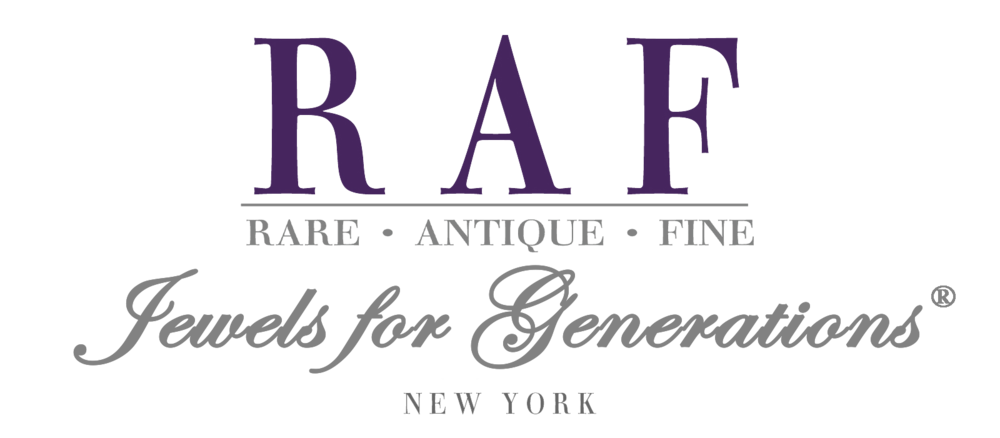A one-carat GIA Certified Type IIa D-Flawless emerald-cut diamond. Photo by RAF Jewels ©
Diamonds form hundreds of kilometers beneath the earth’s crust under tremendous heat and pressure. They are predominantly Carbon, but more than 95% of natural diamonds show traces of other elements in their composition. In fact, most certified D-Flawless diamonds are not the purest diamonds in nature. Although they exhibit the highest color and clarity grade, there are subtle, yet important, chemical and technical differences that separate these diamonds from the crème de la crème - Type IIa diamonds.
What are Type IIa (2A) Diamonds?
While other diamond types may exhibit a D-color they contain some other non-carbon element in the crystal structure. In contrast, Type IIa (2A) diamonds are a special niche of diamonds that exhibit no measurable traces of nitrogen or boron in their structure (see below diagram). They are pure carbon and often display a higher color than a D-color diamond.
When and by Whom were Type IIa Diamonds discovered?
In 1934, scientists Robert Robertson, John Jacob Fox, and A.E. Martin conducted proprietary experiments on diamonds and classified them into two main types: Type I and Type II. The bifurcation is largely “based on the presence or absence of nitrogen impurities.”¹ However, upon further research, diamonds were subdivided into Type Ia (1A), Type Ib (1B), Type IIa (2A), and Type IIb (2B) based on “the arrangement of nitrogen atoms [aggregated or isolated] and the occurrence of boron.”² The diamond-type “[directly relates] to color and the lattice defects” that can be “modified by treatments to change color.”³ Overall, the method to classify diamonds by type is “a convenient way to categorize [them] based on their chemical and physical properties”⁴ for researchers and gemologists. It also helps explain why two diamonds with similar weight, color, clarity, and cut grade may look different to the eye.
GIA Diamond Type Classification System. © Gemological Institute of America
How do you know if a diamond is Type IIa?
The best way to know about a diamond’s type is through a gemological laboratory, such as the Gemological Institute of America (GIA). GIA offers diamond-type testing for a fee; however, the service is not recommended for majority of diamonds in the market. Type IIa diamonds are rare and accompany a supplemental Type IIa Letter with the Diamond Grading Report from GIA.
Are Type IIa diamonds really special?
Yes. Although Type IIa diamonds are pure carbon and hold a special place for researchers and gemologists, their history is more captivating to diamond collectors and aficionados. Prior to the scientific discovery and classification system by the scientists in the 1930s, Type IIa diamonds were unknowingly prevalent in the collections of kings, queens, and noblemen. Notably, many of the world’s largest and most famous diamonds – Koh-i-noor (105.60 ct.), Cullinan, Archduke Joseph (78.54 ct.), Agra Pink Diamond (41 ct.), Elizabeth Taylor Diamond (33.19 ct.), Star of the South (128 ct.), Pink Legacy (18.96 ct.), and several others – are Type IIa.
These diamonds, among other notable diamonds, originated from the world’s first diamond source – the Golconda diamond mines near Hyderabad, India.
Does a Type IIa diamond command a premium price over non-Type IIa diamonds?
Yes, but it’s nominal. Surprisingly, it may come at a price similar to a non-Type IIa diamond. Type IIa diamonds are so scarce that most diamond dealers don’t bother procuring them and overlook this distinction in their day-to-day business. In fairness, consumers are largely unaware about diamond types and rarely ask about them. However, as individuals learn more about diamond-types and their uniqueness, we expect an increase in premiums for Type IIa diamonds.
Would I recommend a Type IIa diamond?
Absolutely. I am more intrigued by the actual natural rarity of these diamonds as compared to other diamonds that are beautiful but largely romanticized because of a remarkable marketing campaign. Diamonds are a wonderful gem - they are hard, brilliant, match well with various attires, and have held a prominent position for centuries. However, what makes Type IIa diamonds unique is their rarity, high purity, and ability to exhibit a higher color than Type Ia diamonds in the market.
¹ Breeding, Christopher M, and Shigley, James E. "The "Type" Classification System of Diamonds and Its Importance in Gemology." Gems & Gemology 45, no. 2 (2009): 96
² Ibid.
³ Ibid.
⁴ Ibid.


